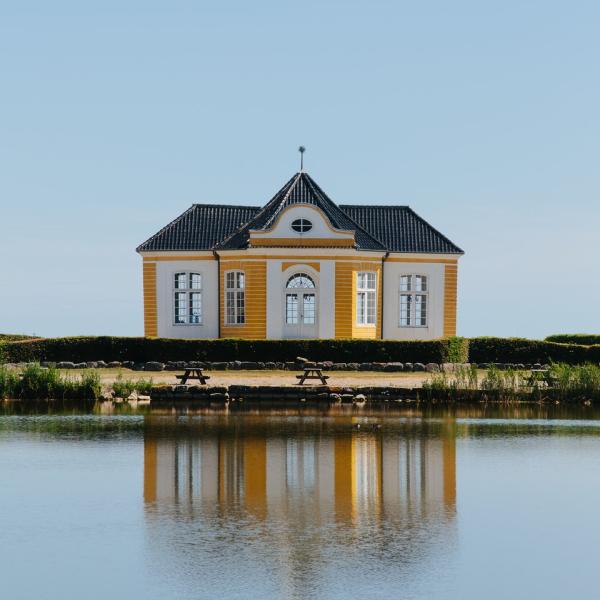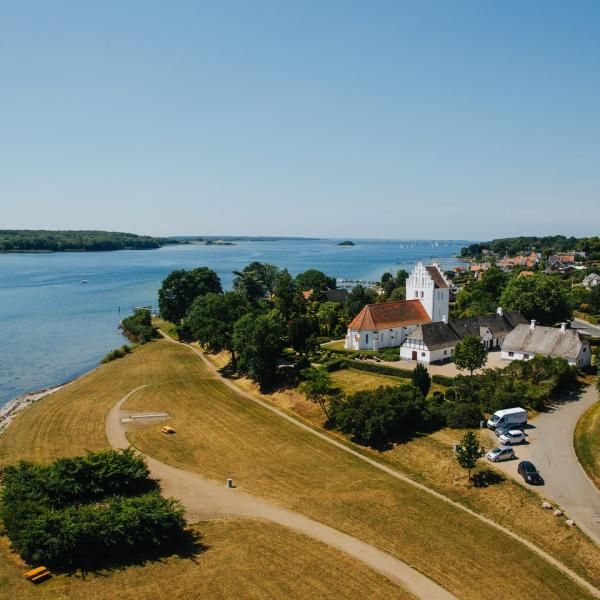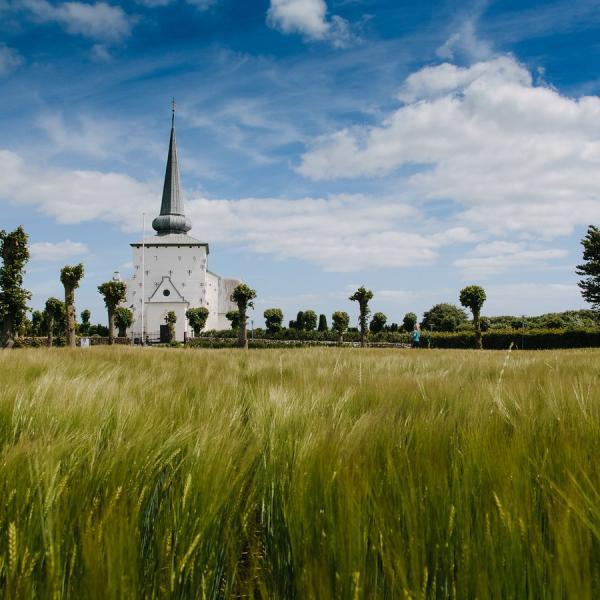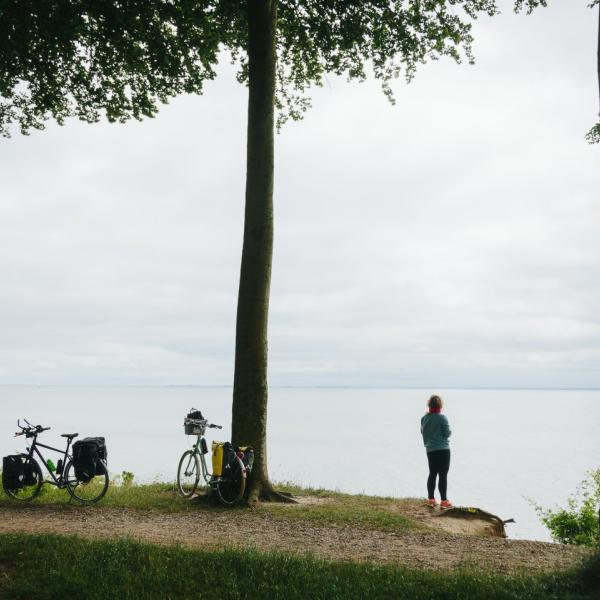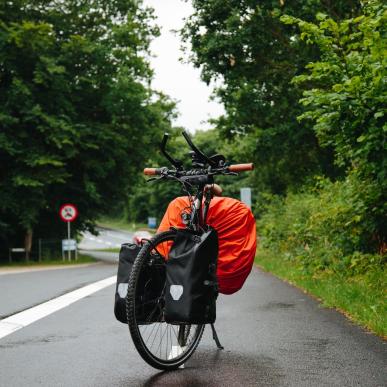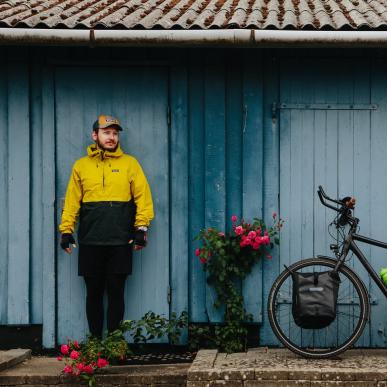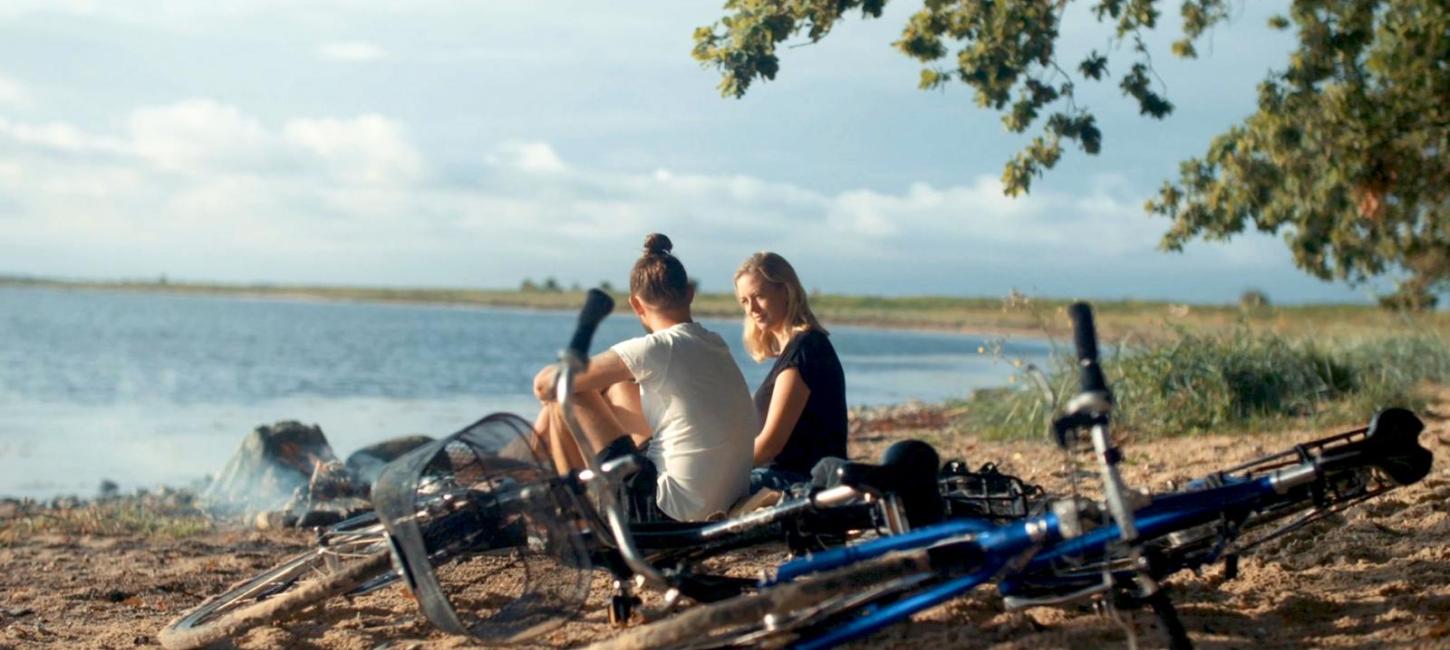
Cycling the Baltic Sea Cycle Route: 820km of hygge on two wheels
This isn't your average cycle path. The Baltic Sea Cycle Route runs through some of Denmark's most enchanting countryside, along country lanes, beside sandy beaches and across peaceful islands. Discover Denmark from the seat of a bike as you navigate our inspiring landscape.
When was the last time you saw a pod of dolphins from the seat of your bike? Spent an afternoon in a medieval castle? Or tasted delicious cheese fresh from the seller as you walked around a weekly market?
The 14-stage journey of the Baltic Sea Cycle Route is uplifting and full of memory-making potential. It's both the perfect way to switch off from everyday life and a unique way to enjoy all of Denmark. Experience nature, lifestyle, history and culture, with a route that winds around historic manors and medieval castles, pretty market towns and unparalleled wildlife experiences.
Follow us on a route through the very best of Denmark.
Highlights of the Baltic Sea Cycle Route
Whichever stage you tackle, you'll find castles and manors, natural wonders and unique small towns that will enchant and inspire you.
Where to start
The route is broken down into 14 stages and is laid out in a figure of eight shape, allowing you to choose either an eastern or a western loop. Both routes are highly accessible. If you are driving from Germany, you will reach the Western Loop first. If you fly into Copenhagen, the Eastern Loop is the closest. The downloadable guide below takes you through the route stage by stage.
Information and route planning
Practical information about the N8
Where can you hire a bike in Denmark? Can you take a bike on a train? The answers to these questions and more are all below.
Frequently-asked questions
Cycling
It couldn’t be easier to cycle in Denmark and cycling holidays are extremely popular. For full details on bike rental in Denmark, inspiration for cycling holidays and much more, read our Cycling in Denmark page.
Fahrrad - Gesetze und Regeln
Sicherheit & Beleuchtung:
- Ein Fahrrad muss immer mit einer Klingel, einem weißen Reflektor vorn, gelben Reflektoren an den Pedalen, gelben Reflektoren an den Speichen (oder alternativ weißen Reflektoren an den Reifen bzw. Felgen) sowie einem roten Reflektor hinten ausgerüstet sein.
- Ein Zweirad muss mindestens ein Vorder- und ein Rücklicht haben.
- Ein Fahrradlicht muss aus mindestens 300 Metern Entfernung zu erkennen sein, ohne zu blenden. Die Lampe muss auch von der Seite erkennbar sein. Das Vorderlicht muss weiß, bläulich oder gelblich, das Rücklicht rot sein.
- Alle Fahrräder müssen zwischen Sonnenunter- und Sonnenaufgang sowie bei schlechter Sicht wie Nebel oder Schnee Licht anhaben.
- Ein Radanhänger mit zwei Reifen muss zwei weiße Reflektoren vorne, zwei rote Reflektoren hinten sowie je zwei gelbe Reflektoren an der Seite haben. Nach Einbruch der Dunkelheit muss ein rotes Hinterlicht hinten oder an der linken Seite angebracht sein.
Transport von Kindern auf dem Rad:
- Kinder unter sechs Jahren dürfen nur gemeinsam mit einer mindestens 15 Jahre alten Begleitperson am Straßenverkehr teilnehmen.
- Erwachsene Radfahrer (über 15 Jahre) dürfen bis zu zwei Kinder unter acht Jahren auf dem Rad transportieren.
- In einem Fahrradanhänger (der für den Kindertransport gedacht ist), dürfen bis zu zwei Kinder ohne Altersbegrenzung befördert werden.
Verkehrsregeln:
- Radfahrer müssen sich immer in Fahrtrichtung ganz rechts halten.
- Vor einer Kreuzung müssen Radfahrer, die geradeaus fahren oder nach links abbiegen möchten, auch weiterhin auf der rechten Fahrbahnseite bleiben. Ist eine Rechtsabbiegespur vorhanden, darf man an der Markierung zwischen dieser und der nächsten Geradeausspur stehenbleiben.
- Radfahrer, die an einer Kreuzung links abbiegen möchten, müssen zunächst geradeaus fahren bis zur gegenüberliegenden Ecke und den Geradeausverkehr passieren lassen, ehe sie ihre Fahrt fortsetzen.
- Radfahren auf Bürgersteigen und Wegen ist untersagt. Ausnahmen sind beschildert.
- Beim Rechts- und Linksabbiegen sowie beim Anhalten muss ein klares Handzeichen gegeben werden.
- Während der Fahrt dürfen Radfahrer nicht mit dem Handy in der Hand telefonieren.
Helm:
- Eine Helmpflicht für Radfahrer besteht in Dänemark nicht.
Mehr über die Regeln zum Radfahren in Dänemark (auf Dänisch).
Finden Sie Informationen über den Transport in Bus und Bahn mit dem Fahrrad hier.
Clearly sign-posted cycle routes
You will find it easy to navigate whilst cycling in Denmark, as the country has over 11,000km of sign-posted routes. Just find your route name, number or logo and follow the signs. Routes criss-cross each other, so it is possible to combine routes and take in the entire country by bike.
Cycle routes are particularly safe in comparison to other countries and national cycle routes tend to follow smaller by-roads, undisturbed forest roads and pathways.
National cycle routes
There are 11 national cycle routes in Denmark, which cover a total of over 4,000km. National routes are signposted with a white route number in a red square and bicycle symbol on a blue, square sign. (Note that Route 10 on Bornholm has a green, rather than blue, background). Odd route numbers 1 to 9 run North to South, while even routes 2 to 8 run East to West. There are two circular routes: Bornholm (Route 10) and the Limfjord Route (Route 12).
Regional and local routes
Denmark also has an extensive network of regional and local cycle routes, each with their own signage. The regional route signs follow the same patterns as the national; white route numbers from 16 to 99 on a blue background. The local route network also uses the same system but with numbers from 100 to 999.
Countryside byelaws
Everyone can go where they like in the Danish countryside as long as they are considerate of animals, plants and other people. It is your responsibility to be safe.
Here are some of the most important rules:
- You are allowed in public woods and forests 24 hours a day, all year round.
- You are only allowed in private woods and forests from 6 am until sunset, and only on roads and paths.
- All cycling is to be carried out on roads and trails, regardless of public or private land.
- Foraging for private use is allowed.
- It can be difficult to see if a wood or forest is publically or privately owned. Look for signs and follow the rule of thumb that red posts are used in public forests, and green ones are used on private land.
- Entry to a forest can sometimes be limited during the hunting season.
- You are allowed on uncultivated land (meadows, cliffs, coasts and beaches etc) on foot while pushing your bike.
- If you want to stay in a public forest /uncultivated land, you have to be at least 50 meters from the nearest building. If you want to stay on private ground, you have to be at least 150 meters from the nearest building.
- You can check further rules on: The Danish Nature Agency
